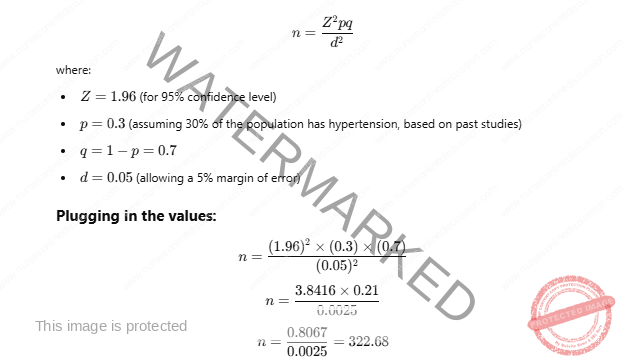Writing a research proposal and report
Subtopic:
Sample Size Determination

What is Sample Size Determination?
Sample size determination is the process of calculating the number of observations or participants required to accurately represent a population in a study. It ensures that the findings from the sample can be generalized to the larger population while maintaining statistical accuracy and reliability.
Factors Influencing Sample Size
The determination of an appropriate sample size is influenced by several factors:
- The purpose of the study.
- Population size: Generally, the larger the population, the larger the sample size required.
- The degree of variability in the attribute being measured. The more heterogeneous the population, the larger the sample size required.
- The allowable sampling error (level of precision). The level of precision, sometimes called sampling error, is the range in which the true value of the population is estimated to be. This range is often expressed as a percentage (e.g., ± 5 percent).
- The level of confidence desired. A 95% confidence level is usually desired.
Strategies for Sample Size Determination There are several approaches to sample size determination:
- Using a census: Including all members of a population in the sample, which is suitable for small populations. This eliminates sampling errors and provides data on all individuals in the population. However, it may not be cost-effective for larger populations.
- Transferring a sample size from a similar study: This approach can be problematic, since it may repeat the mistakes of the previous study.
- Using published tables: Utilizing established tables to determine the sample size based on population size. For example, the Krejcie & Morgan table of 1970.
- Applying standardized formulas: Calculating a sample size using formulas. For example, the formula developed by Kish and Leslie in 1965:
- Formula: n = Z²pq / d²
- Where:
- n is the sample size.
- Z is the statistical certainty (1.96 at 95% confidence interval).
- p is the assumed true population of prevalence of the attribute in the population.
- q is the difference between 1 and p (1-p).
- d is the error allowed.
- Where:
- Formula: n = Z²pq / d²
Example Scenario
A researcher wants to determine the prevalence of hypertension in a rural community. The total population is 10,000 people, but instead of surveying the entire population, the researcher will determine an appropriate sample size.
Step-by-Step Calculation Using Leslie Kish Formula
The Leslie Kish formula is:

Since sample size must be a whole number, the researcher would round up to 323 respondents.
Conclusion
To estimate the prevalence of hypertension in a rural population of 10,000 people, a sample of 323 individuals would be required to achieve a 95% confidence level with a 5% margin of error.
Get in Touch
(+256) 790 036 252
(+256) 748 324 644
Info@nursesonlinediscussion.com
Kampala ,Uganda
© 2025 Nurses online discussion. All Rights Reserved Design & Developed by Opensigma.co

